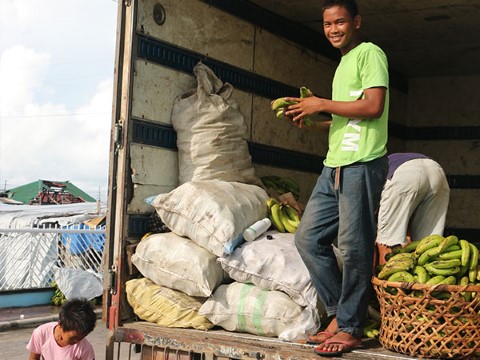

The Philippines is one of Asia’s fastest growing economies, and it’s the 39th largest economy in the world.

The islands are a newly industrialized nation, with rapid growth in the services and manufacturing industries — although many still work in agriculture, like this banana farmer.

Economic growth may be rapidly expanding, but it’s not fair or even. A lot of factors contribute to continued poverty, including corruption, problems with infrastructure and wide income and growth disparities among regions.

In fact, more than 25% of the Filipino population lives below the poverty line.

Quezon City is the most populated city in the nation, with more than 2.7 million people.

Quezon City is also located along the area’s typhoon belt. On average, the city sees 20 such storms every year. At least one-quarter cause serious damage.

In November 2013, Super Typhoon Haiyan was one of the worst disasters to hit the islands. It affected more than 16 million people, claimed 6,000+ lives and caused nearly 40 billion Philippine pesos in infrastructure and agricultural damage.

This greatly contributed to the rise in poverty the following year.

Typhoons aren’t the only natural danger: The Philippines lies in the “Pacific Ring of Fire,” making it prone to earthquakes and volcanic eruptions.

Because of the country’s geography and physical environment, it’s also susceptible to droughts, flashfloods and landslides.

Despite some of the slowest internet speeds on the planet (2.5 mbps), the Philippines has held two titles: texting capital (late 1990s and early 2000s) and, currently, social media capital of the world.

The “jeepney” is a popular mode of public transportation and a true Filipino innovation. The uniquely decorated vehicles are made with surplus engines left behind by American GIs after WWII.

Christmas in the Philippines is an epic affair! The season begins in September and doesn’t end until the first week of January, during the Feast of the Three Kings. It is the country’s longest religious observance.

Comments
You must be logged in to comment. If you have an account, click here to log in.